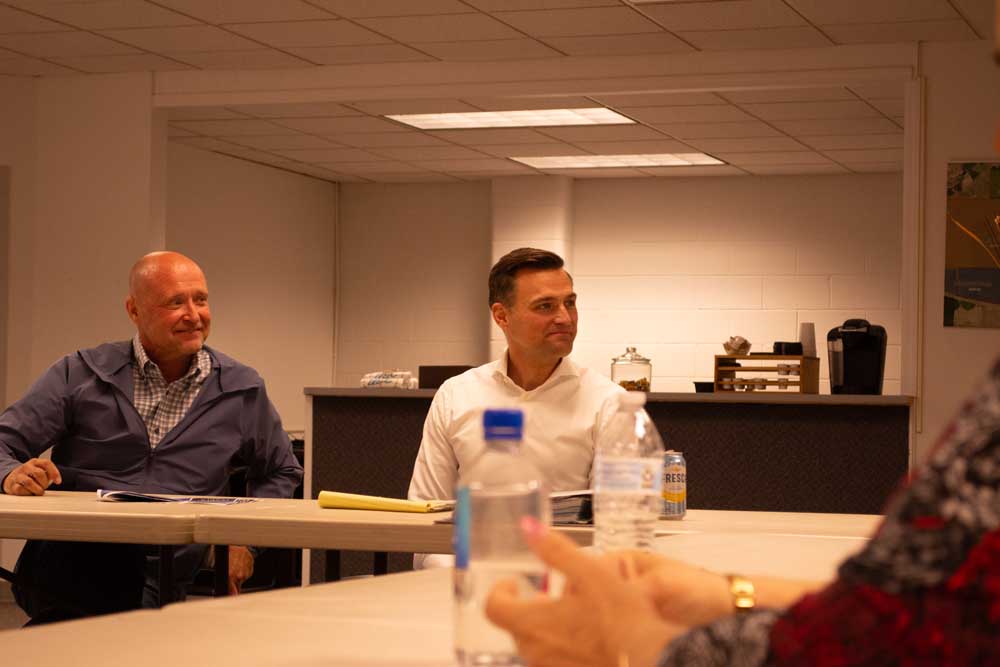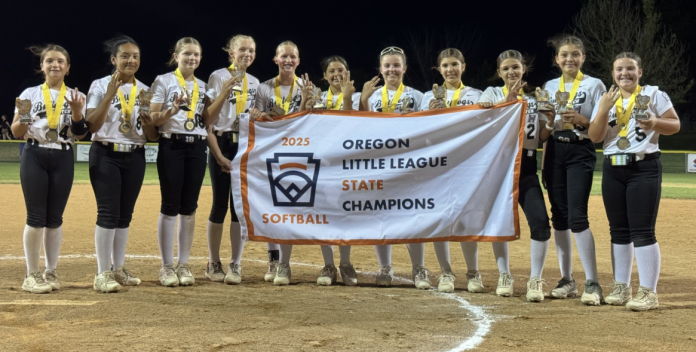Quality over quantity: A look at end of life care in Umatilla County
Published 5:00 am Monday, February 19, 2024

- A young portrait of Lila Transue, left, and her husband, Jay Yowell, stands on a small side table Feb. 9, 2024, in Transue’s living room in Pendleton.
PENDLETON — Reaching the end of her life, Lila Transue has found a second family in the hospice caregivers who are helping her maintain comfort as she experiences heart failure and breathing problems.
Trending
“I look forward to my people,” she said. “It’s been just wonderful that I have these people. I feel like they’re my family, too.”
Transue, 86, is a Pendleton resident who has been in hospice care with Hermiston-based Vange John Memorial Hospice through Good Shepherd Health Care System for a year and a half.
Vange John, which joined Good Shepherd in 1997 and became Medicare certified in 1998, is one of four hospices serving Umatilla County. It is one of two Medicare hospice providers in Oregon with a five-star family caregiver survey rating.
Trending
Across the state, as of January, there are 74 licensed hospices in Oregon according to the Oregon Health Authority. Around 20,000 people used hospice services in the state in 2019, though about a fifth of them chose to stop hospice care.
“Every individual’s end of life journey or what they want looks very different,” said Polly Conner, manager of Vange John Memorial Hospice. “It’s a lot of talking, a lot of education, a lot of hearing what their concerns are.”
The impact of hospice
It’s the hospice team’s job to work with a patient and their family to find the right approach to end of life care for each individual.
Vange John started offering hospice services in Pendleton after CHI St. Anthony Hospital’s hospice service stopped in 2017. The hospice serves a 60-mile radius and employs seven nurses caring for up to 45 patients at a time, though the number can change quickly.
Patients can start hospice care services once they decide not to seek treatment for a terminal disease or illness that has at least a 50% likelihood to lead to their deaths within six months. Each person must be certified by their primary provider and the hospice’s doctor to be approved for care.
Transue, for example, has chronic obstructive pulmonary disease and heart failure. In her words, she has “a bad heart and (she) can’t breathe.”
For people like her, who no longer want to pursue treatment or whose illnesses are incurable, hospice offers a way to stay comfortable without either hastening or delaying death.
“I’m very independent,” Transue said, “and this allows me to live in my home and be more normal.”
For some, hospice care lasts a day. For others, they can receive services for months or even years. Either way, the patient has made a decision favoring quality of life over quantity of life, said Conner.
“Some people come to us and they’re pretty high functioning,” Conner said. “So we can start talking about, ‘These are the things we might anticipate is going to be happening in your particular disease issue and how are we going to navigate through that so that we’re still honoring what your personal goals of care are.’”
Vange John, like many hospice providers, has a social worker and chaplain in addition to the medical team of nurses, assistants and at least one supervising doctor. Their roles support a person’s needs outside of their medical choices and can help support a family during and after the loss of their loved one.
“I think so often people see hospice as the very, very end,” said Carollyn Robinson, clinical liaison for Vange John and daughter of the hospice’s founders. “But when we can get involved earlier, we can really give that quality life that they’re looking at.”
Geographic challenges
People living in rural areas have, in general, lower access to hospice care, though Conner and Robinson said they believe people in Umatilla and Morrow counties who want hospice care are able to receive it.
Providing hospice to people living more rurally can be a challenge partly because the schedule of seeing patients needs to be intentional so a care provider isn’t driving back and forth across the region all day.
The Pendleton team primarily serves their Pendleton patients and the eastern part of the county, helping to reduce travel mileage and making the job more appealing for staff.
But it still can be dangerous during bad weather. In January, some of the roads in Umatilla and Morrow counties were hazardous due to snow and ice coating them.
“We still need to meet patients’ needs,” said Conner, “but yet keep staff safe, and get people what they need.”
Offering hospice services — especially in rural areas — also can be prohibitively expensive, as can hiring trained nurses and doctors who have experience or certifications in providing palliative care. That’s where a larger care provider like Good Shepherd can sometimes step in.
Vange John Memorial Hospice is helping address this potential lack of providers by offering continuing education to its staff members. Conner and a case manager are certified in hospice and palliative care nursing, and another nurse is preparing to take the test for certification.
“Good Shepherd has always promoted continuing education for their team members, and they’re constantly supporting that continuing education,” Conner said. “So our staff, even our office staff, are getting continuing education as needed.”
Helping staff to further their education is one way to encourage their growth within the company and helps them to stay. It also helps that the hospice care teams work in the places they live, especially in more rural regions. Conner grew up in Heppner, for example.
Offering emotional support
But working in a hospice environment also takes a certain type of person.
“They need to have a high level of autonomy because you are typically in that home by yourself,” Conner said, “And so need to be confident in what you’re doing. You need to be able to think.”
In addition to critical thinking, the care provider needs to be ready to offer more personalized, emotional support than is typical in a hospital setting.
“There’s a certain dynamic when you’re getting to meet people in their homes,” said Misty Pierce, a registered nurse with the hospice. “You just get to really know them, their family, their surroundings, and what’s really going on.”
Pierce said it’s “rewarding for your soul” to help people who are at the end of their lives.
“With hospice you can get down to the heart and soul,” said Robinson, the clinical liaison. “It’s what really matters. And we want our people to know they matter, ‘till the very end.”
Pierce typically sees five or six patients per day, spending about 30 minutes to an hour with each one. Even if the medical part of her care is over quickly, she will stay and chat, serving as an additional companion for her patients.
“Every once in a while we know that we need to take a little personal break,” she said. But it’s worthwhile to her.
“There’s something fulfilling about it, and knowing that you felt them in the last part, the last of their days,” Pierce said. “You were there for them. You’re there for their family.”
Hospice is distinct from other health care, Conner said. The care team is by each patient and family’s side even after there is nothing more to be done, dispelling fear of what is to come.
“As a hospice nurse, it’s not a new experience for me to go on, to walk through this journey with you,” she said. “But it is your first time. So let me help you.”









